Log in or create new account to save this product to your wishlist.
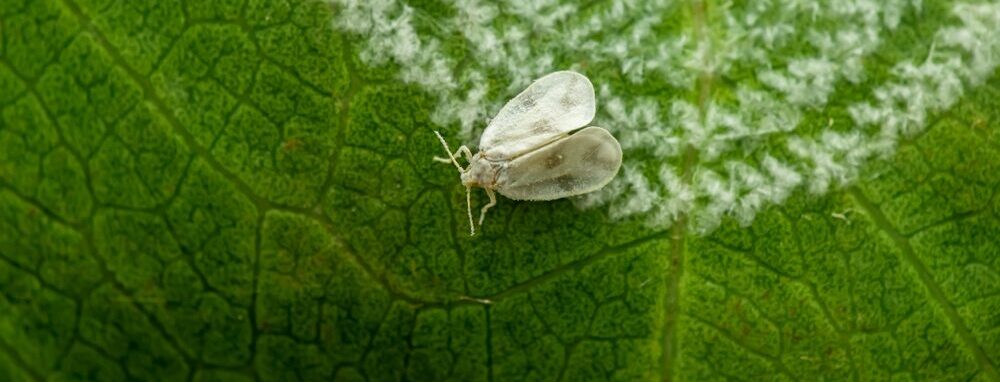
Whitefly on your plant: Prevention, Control, and Treatment
Whitefly are tiny little insects that quickly kill your plants and attract ants! Find out how to prevent and control an infestation.
🌱 All important maintenance moments for your lawn during the year. Leave your email and we will send you the lawn calendar for free.
Enter your email
Receive the lawn calendar in the mail
Enjoy a green lawn all year round!

- Order by 2PM = shipped today
- 250.000+ satisfied customers!
- 60 day satisfaction guarantee
Whiteflies are minuscule winged bugs that can wreak havoc on a wide range of plants, including vegetables and ornamental flowers.
- Understanding Whiteflies: Not Your Ordinary Fly
- Recognising Whitefly Damage
- Spotting a Whitefly Infestation
- The Life Cycle of Whiteflies
- When are whiteflies most active?
- How to identify whitefly hotspots
- Plants Vulnerable to Whiteflies
- How do you get rid of whitefly infestations?
- Effective Whitefly Control Strategies
- How to prevent whitefly once you’ve attacked the infestation
- A Note on Ants
- How to care for plants after a whitefly infestation?
- Tackling your whitefly problem!
- FAQS
These tiny pests are infamously resistant to many synthetic pesticides, making it a challenge to eliminate whitefly infestations. However, with appropriate knowledge, you can effectively combat these plant menaces.
This article is about the whitefly on your plant and how to prevent and control them, and how to treat your plants after an infestation.
Understanding Whiteflies: Not Your Ordinary Fly
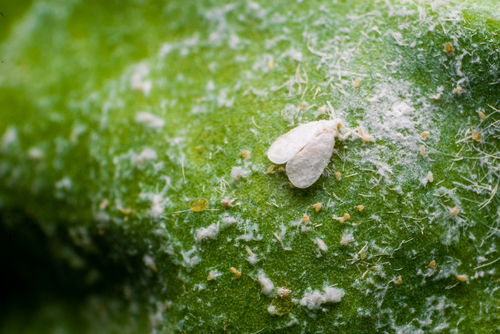
Despite their name, whiteflies are not true flies. They are tiny, white-winged insects, usually measuring about 2mm in length and belong to the order Hemiptera. This makes them close relatives of aphids, mealybugs, and scale insects.
Whiteflies are generally active during the day and gather together in groups on the undersides of leaves. When disturbed, they scatter, making their presence more noticeable than other nocturnal insect pests.
There are hundreds of whitefly species, but the most troublesome are those that target a wide variety of plants. These notorious species include the greenhouse whitefly, banded-winged whitefly, giant whitefly, cabbage whitefly, citrus whitefly, and Silverleaf whitefly.
Is it a whitefly, an aphid, or a spider mite? Find out how to identify common plant pests with our collection of expert articles, which will help you identify and control infestations.
Recognising Whitefly Damage
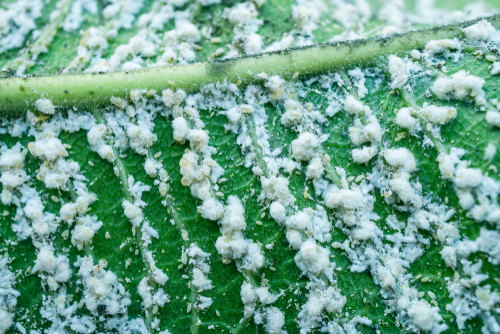
The damage caused by whiteflies is twofold.
Initially, both nymphs and adults feed on the plant’s sap, sucking the life out of new growth. This leads to stunted growth, leaf yellowing, and reduced yields.
And while the perpetual feeding weakens the plant, making it susceptible to disease, whiteflies excrete a sugary substance known as honeydew, which can spur the growth of black sooty mould.
This mould blocks light from the leaves, hampering photosynthesis and potentially killing the plant.
Spotting a Whitefly Infestation
Whiteflies can be difficult to spot early on due to their small size and preference for the undersides of leaves. A tell-tale sign of an infestation is a cloud of tiny white insects taking to the air when you disturb a plant.
Adult whiteflies have powdery white wings and short antennae and are often found near the tops of plants or on stem ends. The wingless nymphs are flattened, oval, and almost scale-like in appearance. After this initial stage, they attach themselves to the underside of leaves and begin feeding.
Another sign of a whitefly infestation is the presence of honeydew. If you notice a sticky substance or spot a plethora of ants, it indicates that whiteflies have been feeding on the plant for several days.
The Life Cycle of Whiteflies
Understanding the life cycle of whiteflies can shed light on the best time to intervene and control their population. Female whiteflies can lay between 200 and 400 eggs, usually in circular clusters on the undersides of upper leaves.
The eggs hatch in five to ten days into first instar nymphs or crawlers, which move away from the egg before flattening themselves against the leaf to feed. The remaining nymphal stages do not move.
This is followed by a non-feeding pupal stage, after which young adults emerge to start the cycle anew.
At typical room temperature, whiteflies can develop from egg to adult in approximately 25 days, and adults may live for one to two months.
When are whiteflies most active?
Whiteflies are most active during the day, especially in mid-to-late summer when it gets warm and humid.
They can thrive year-round in warmer southern regions, but in colder northern climates, they typically go dormant during the winter.
How to identify whitefly hotspots
Whitefly spots are referred to as whitefly infestations. They’re typically noticeable as clusters of tiny white insects on the underside of leaves.
The key to identifying whiteflies is to look for them on new plant growth, particularly on freshly unfurled leaves.
Apart from the visible presence of these insects, other signs of whitefly infestation may include yellowing leaves, stunted plant growth, and a sticky substance on the plant or nearby surfaces, resulting from their honeydew secretion.
Plants Vulnerable to Whiteflies
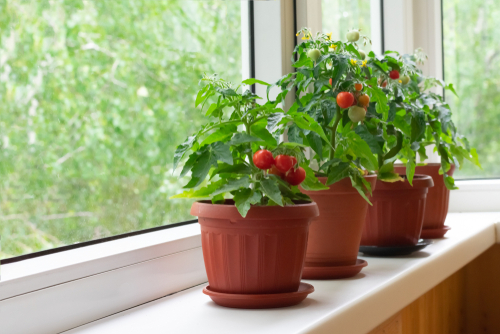
Whiteflies are not picky eaters. They feed on over 250 ornamental and vegetable plants. Among vegetables, whiteflies are particularly fond of
- Tomatoes
- Aubergines
- Peppers
- Okra
- Cucumber
- Sweet potatoes
- Squash
In the case of ornamental plants, whiteflies often target:
- Hibiscus
- Poinsettia
- Fuchsia
- Petunia
- Roses
Certain species of whiteflies have specific preferences. For instance, the cabbage whitefly will attack brassicas, including cauliflower, cabbage, and broccoli.
How do you get rid of whitefly infestations?
There are several ways to get rid of whiteflies.
Firstly, spray the underside of your plant’s leaves with Neem oil or a soap spray. Do this in the mornings for the best results. However, gently spray the plants with water to dislodge whitefly eggs and nymphs in the cast of a mild infestation.
Additionally, regular maintenance, like pruning and removing wilted leaves, can also help prevent further infestation.
Another natural method is to attract beneficial insects like ladybugs, spiders, green lacewing larvae, and dragonflies, which are known to prey on whiteflies.
Finally, think about the chemicals you’re using in your garden. Avoid high-nitrogen fertilisers, which can attract whitefly infestations.
Effective Whitefly Control Strategies
Addressing a whitefly infestation requires a multi-pronged approach. Here are some effective strategies:
- Yellow Sticky Traps: These are useful for monitoring and suppressing adult whitefly populations.
- Natural Predators: Ladybugs, green lacewing larvae, and whitefly parasites are natural predators of whiteflies and can be introduced to infected areas.
- Hummingbirds and Dragonflies: These creatures are also natural predators of whiteflies. Creating a habitat that attracts them can be beneficial for controlling whitefly populations.
- Aluminium Reflective Mulch: This can be used early in the season, especially around vegetable crops. The reflective mulch makes it difficult for whiteflies to locate their preferred plant hosts.
- Pesticides: Use short-lived, low-toxicity organic pesticides to establish control over high populations, then release predatory insects to maintain control.
- Horticultural Oils: These work by smothering insects and are effective on all stages of whiteflies.
How to prevent whitefly once you’ve attacked the infestation
Maintaining a healthy plant environment is key to avoiding further infestation, as whiteflies are attracted to stressed or unhealthy plants. Regularly using homemade insecticidal soaps or Neem oil spray can help deter new whiteflies’ attacks.
Keep checking the undersides of leaves where whitefly are likely to cluster. Then, introduce naturally repelling plants close to your susceptible plants. However, isolate the repelling plant for a few days before placing it near other plants to prevent potential disease spread.
Plants that repel whitefly are:

- Catnip
- Basil
- Lavender
- Dill
- French marigold
- Bee balm
- Chives
- Nasturtium
- Wormwood
- Garden thyme
- Epazote (Mexican tea)
- Peppermint
A Note on Ants
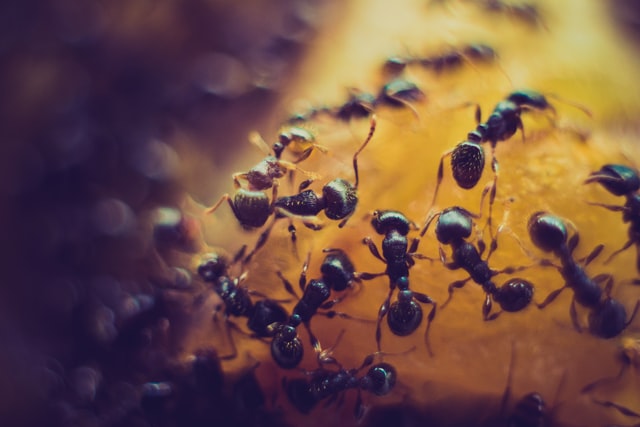
Ants feed on the honeydew produced by sucking insects like whiteflies and will protect these pests from their natural enemies.
Applying a barrier to the stalks of affected plants can help control ant populations, which in turn can help control whitefly populations.
For more information about how to handle ant invasions, check out our expert guide to getting rid of ants (the humane way!).
How to care for plants after a whitefly infestation?
After a whitefly infestation, it’s essential to care for your plants properly to help them recover and prevent potential re-infestation.
- Start by removing and destroying any severely infested plants, especially those that have finished producing for the season.
- Next, inspect new plants for whiteflies and nymphs before introducing them to the garden. This can prevent the introduction of new whitefly populations.
- Consider using a plant-friendly insecticidal soap to cleanse your plants’ leaves. Be sure to follow the directions on the packaging and spray the undersides of the leaves where whiteflies often congregate.
- Treat your plants with Neem oil, an effective natural remedy for whitefly control. It also has a residual effect that can deter whiteflies from returning.
- Finally, monitor your plants closely for signs of new whiteflies or other pests. Regular inspection can help catch problems early before they become significant infestations.
Tackling your whitefly problem!
Whiteflies can be a persistent problem for gardeners and plant lovers, but they can be effectively controlled with the correct information and tools.
Remember to monitor your plants, especially during the warmer months, regularly, and take action at the first sign of these tiny pests.
With a little patience and persistence, you can keep your plants healthy and free of whiteflies.
FAQS
Whiteflies are tiny, sap-sucking insects often found in warm climates and indoors in greenhouses — usually found on the underside of plant leaves. They’re named for the white wax coating on their wings and body — however, whitefly are actually more closely related to moths than flies!
To eliminate whiteflies, apply Neem oil or soap spray to affected plants, ensuring you cover the underside of leaves. Regularly hose down plants to disrupt their lifecycle. Attract beneficial insects, such as ladybugs, which prey on whiteflies. Avoid high-nitrogen fertilisers that attract these pests. Regularly monitor new growth areas.
Whiteflies are often attracted to stressed or unhealthy plants. Overwatering, poor soil quality, or incorrect light conditions can make your plants susceptible. Also, if you’ve had whiteflies before, eggs or pupae might have been left behind, causing a re-infestation. They can also be introduced through new plants or compost.
Any questions?
I hope I’ve answered all your queries about the horror that is a whitefly infestation. But if you have any questions, drop us an email, and we’ll get back to you as soon as possible.
Alternatively, check out our comprehensive Help & Advice section on the MOOWY website for all your gardening and lawn care needs.
Thanks for reading!
-
Orchids: A Complete Guide on How to Care for ThemWant to give your orchid the best possible care? Discover essential tips from placement to watering and pruning. Learn everything you need to know!Read more
-
Growing Wisteria Made Simple: From Planting to Perfect BloomsWith blossoms like a purple waterfall, Wisteria sets an almost magical and colourful mood. If you want to grow this beauty in your garden, you’ll need a bit of patience. Don’t worry, it will most definitely pay off.Read more
-
How to Build a DIY Greenhouse: A Practical Guide for Smart SpendersImagine extending your growing season throughout the year, nurturing tender plants regardless of the weather, and creating a personal garden sanctuary. This is precisely what a DIY greenhouse offers you. Let’s learn how to build one.Read more
-
How to Grow Eucalyptus in British GardensWith a little love and care, eucalyptus trees can thrive in English gardens. Since they don’t germinate well without proper help, there are not considered invasive. So, there is no reason not to plant them if you enjoy their looks.Read more
-
Transform Your Garden with All-Year-Round Flowering PlantsDid you know you can enjoy blooming flowers even in January? With the right selection of all year round plants, there’s no need to wait until spring to add some colour to your garden.Read more
-
How to Create a Butterfly Garden: A Simple Guide for British GardensThe UK's butterfly population includes 59 different species. These beautiful winged creatures face a steady decline because of habitat loss, pollution and changing weather patterns. Your garden can become a vital link between nature reserves and natural habitats. Let’s explore how.Read more
-
Volcanic Rock Dust for Your Garden—Application and TipsDid you know that volcanic rock dust is a brilliant organic soil improver? This article explains exactly what it's good for and how to use it properly.Read more
-
How to Use Landscape Fabric ProperlyIf weeds or erosion in your garden are troubling you, landscape fabric might be the solution. We’ll explain how and when to use it properly, just keep on reading.Read more
Leave a comment
Your answer will be displayed on the site and the interested party will be notified by email.
Leave a comment
Have a question or want to share your experience? Leave us a comment.

- Order by 2PM = shipped today
- 250.000+ satisfied customers!
- 60 day satisfaction guarantee

- Order by 2PM = shipped today
- 250.000+ satisfied customers!
- 60 day satisfaction guarantee

🌱 All important maintenance moments for your lawn during the year. Leave your email and we will send you the lawn calendar for free.
Enter your email
Receive the lawn calendar in the mail
Enjoy a green lawn all year round!






















Comments (0)
There are no comments yet. Well then, what are you waiting for to
Be the first to write your comment!inaugurate this pretty page?
Do you have some comments?